Exhibitions
Traveling the Fifty-three Stages of the Tōkaidō with YouTuber Suits
2023.05.26(Fri) - 2023.07.10(Mon)
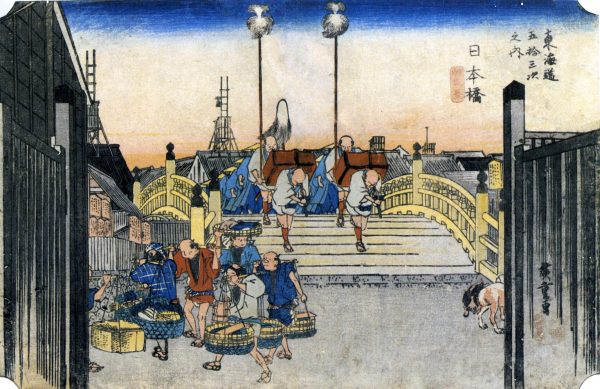
Overview
The successful # (hashtag) series is back. This time, it's Utagawa Hiroshige’s Fifty-three Stages of the Tōkaidō. Ukiyo-e is a specific painting style that evolved during the Edo period (1603–1867), backed by the thriving economy and flourishing culture of the capital city Edo as the basis of the enriched lives of townspeople. When long-distance touristic travels entered the domain of ordinary people’s lives, landscape pictures caught their imagination. The Fifty-three Stages of the Tōkaidō was published against this social background in 1833, from Takenouchi Magohachi’s printing house Hoeidō, and enjoyed an immense success. Each of the 55 prints on display presents the landscapes along the highway with lyrical depiction of people and customs observed through travels. Fast-forward into the 21st century, a transport enthusiast took the same journey on an electric bicycle. This is none other than a successful YouTuber, Hiroto, aka Suits. The exhibition draws a parallel between the journeys on the same road, several centuries apart.
[YouTuber Suits]
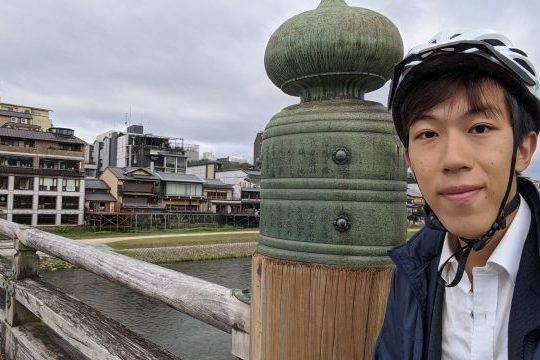

Born in 1997, Suits started his first “full-time” YouTube channel in 2017 with a video featuring a trip of the longest train journey in Japan, covering JR-serviced routes across the country on a single return ticket. His channel is mainly populated by videos of his trips on public transport. His YouTuber fame is backed by the knowledgeable and entertaining commentary he makes in the videos. In October 2020, he set out on a journey along the original Tōkaidō highway by electric bicycle. The series videos of this trip proved to be a huge success.
[ The Hoeidō edition of the Fifty-three Stages of the Tōkaidō ]
This is a set of 55 large-size woodcuts, published in c. 1833. It was initially a joint publication between two printing companies, the Hoeidō (owner Takenouchi Magohachi) and the Senkakudō (owner Tsuruya Kiemon), but subsequently, the former took over the printing rights. The series is based on a theme of the lodging stations along the major highway Tōkaidō, that connected Edo, the shogunate capital of the east, and Kyoto, the Imperial capital of the west. He ingeniously incorporates the local customs, specialties, and other features representative of each location in his illustrations, with his skillful arrangements in terms of seasons, weather conditions, etc. These images inspired many townspeople of Edo for traveling. His attention to details extended even to the countenance and demeanor of the people he drew.
The success of the Hoeidō edition brought Hiroshige the fame as a leading figure in landscape woodcut ukiyo-e. It was followed by two more versions of the Tōkaidō series and more than 20 designs in relation to the highway.
[Utagawa Hiroshige 1797–1858]
Utagawa Hiroshige, birth name Andō Tokutaro, was born in Edo as a son of the shogunate’s official fire brigade officer. He lost his parents when he was 13. Two years later, he joined the atelier of ukiyo-e master Utagawa Toyohiro (1774–1830), who gave him the alias Hiroshige. He started out specializing in bijinga portraits, but subsequently he discovered his passion for landscapes as he published Famous Places of the Eastern Capital in c. 1831, a series that depicted some landmarks of Edo in vibrant colors. The following opus, the Fifty-three Stages of the Tōkaidō, made him a famous painter. His poetic compositions were marveled by many people, and he remained prolific throughout his career, subsequently producing One Hundred Famous Views of Edo and other masterpieces.
[Exhibition Highlights]
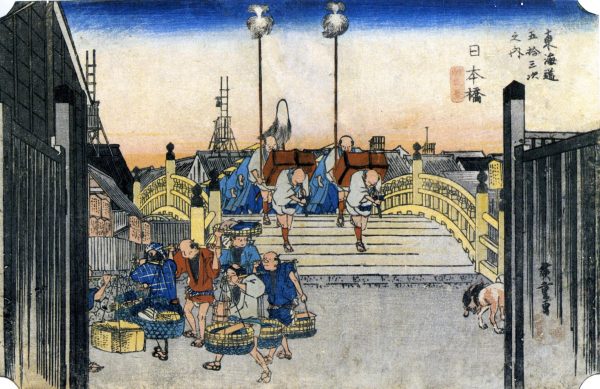
NIHONBASHI: MORNING SCENE
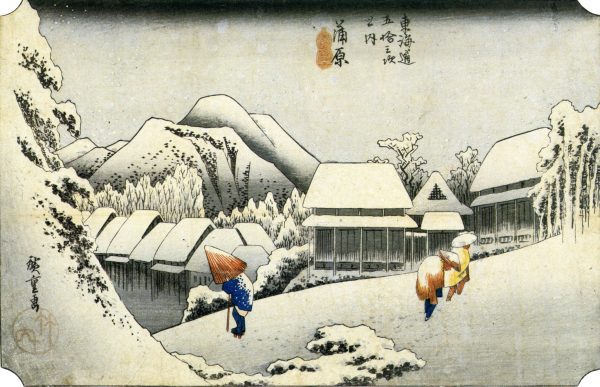
KANBARA: SNOWY NIGHT
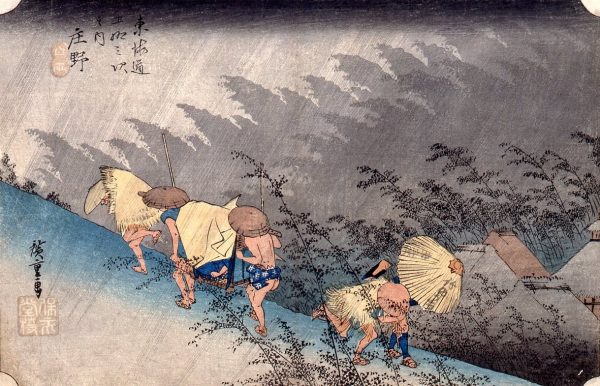
SHŌNO: DOWNPOUR
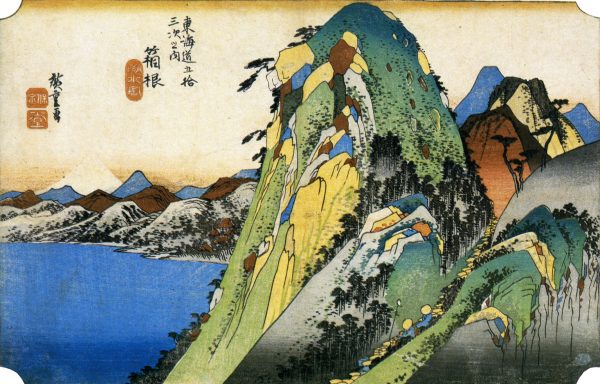
HAKONE: VIEW OF THE LAKE
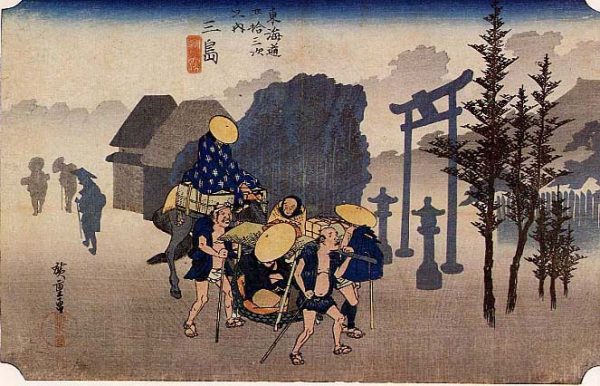
MISHIMA: MORNING MIST
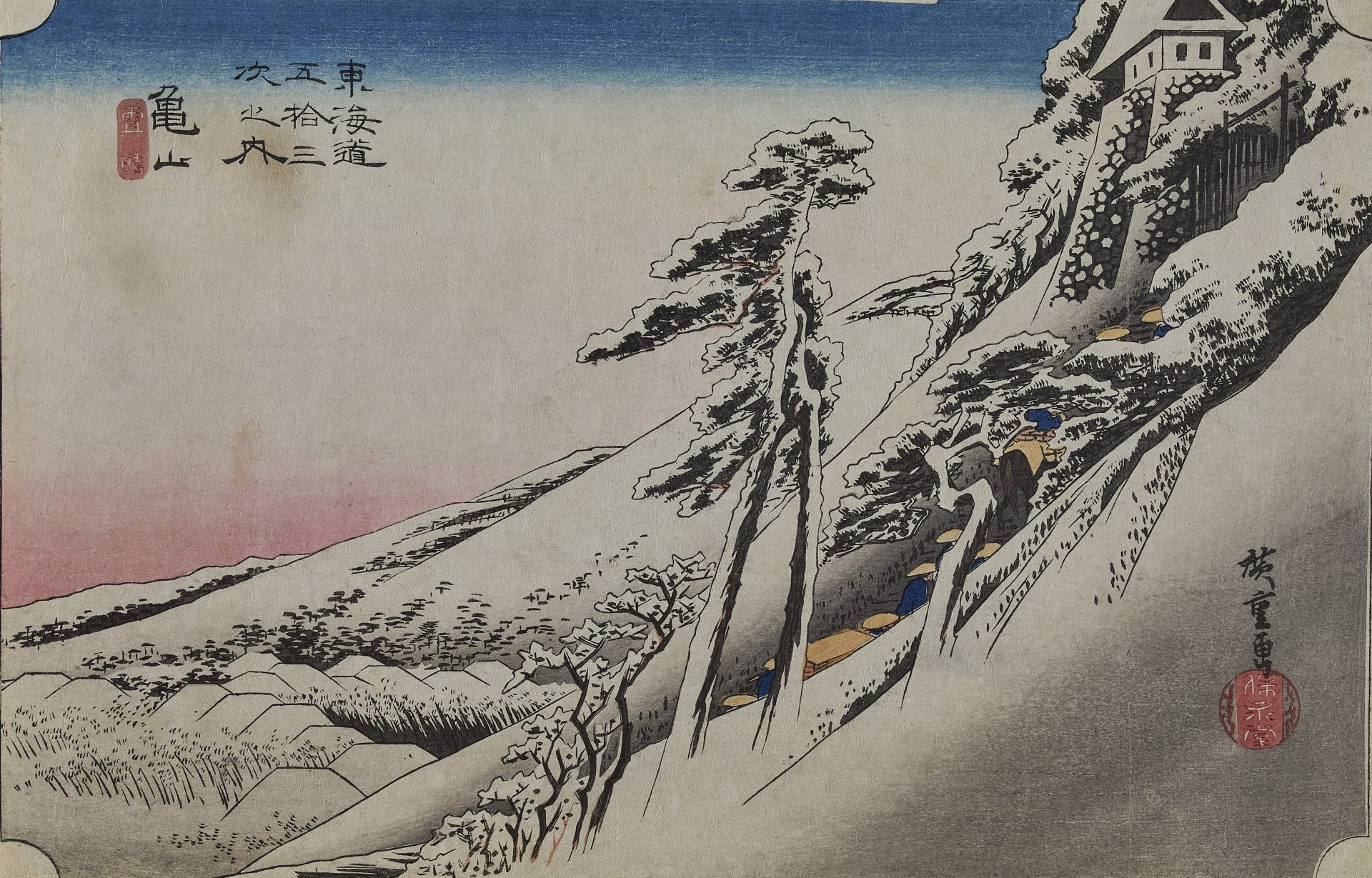
KAMEYAMA: CLEAR WEATHER AFTER SNOW
INFORMATION
| Exhibition title | Traveling the Fifty-three Stages of the Tōkaidō with YouTuber Suits |
| Event period | Sat. May 26 to Mon. July 10, 2023 |
| Closed | on Thursdays (except June 15) |
| Venue | MOA Museum of Art |
